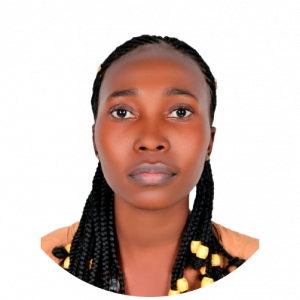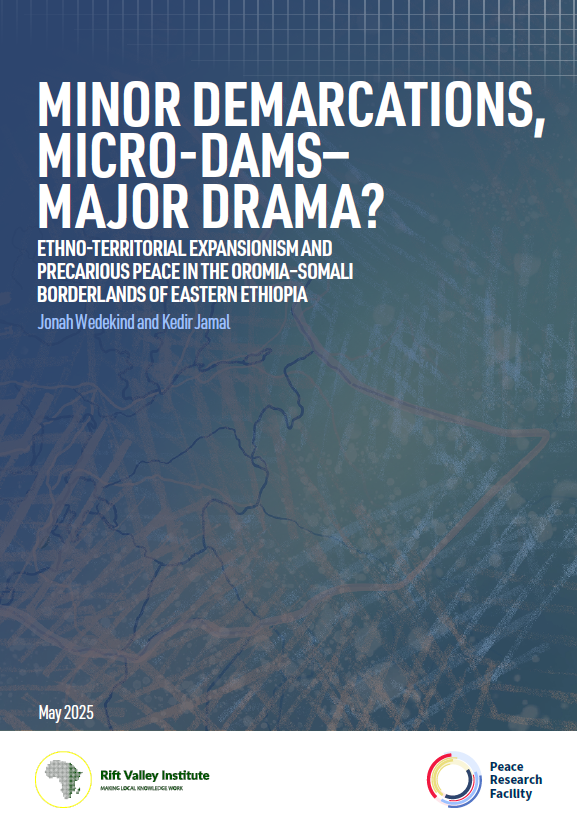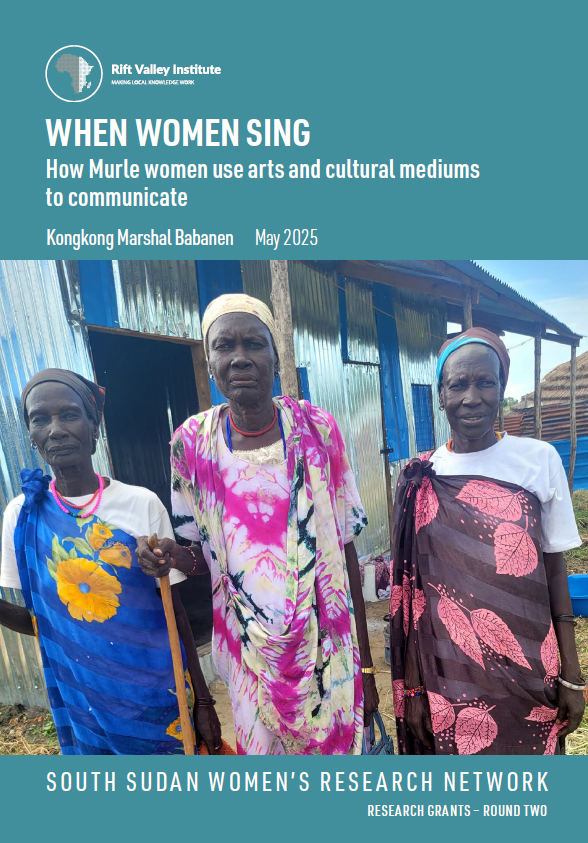This blog explores traditional narratives of South Sudanese on climate change, their lived experiences, as well as perceptions on appropriate responses to the impacts of climate change.
Introduction
This blog is about traditionally oriented perceptions of climate change in Juba City, where most climate change narratives begin from a cultural perspective associated with the existence of a supernatural being. The inherent belief system among communities, particularly in the areas targeted for the research behind this blog, is that a drought or flood is caused by an act of God or a supernatural being. Droughts and floods among these communities have often been understood from a religious point of view. This view has, therefore, influenced climate adaptation and mitigation approaches. For example, rainmakers perform rituals to call for rainfall and to stop or prevent floods.
An extract from an interview illustrates this. The cutting down of trees without performing rituals or sacrifice to the gods ‘is a big misfortune to the climate and human being[s]. The gods of trees, big water bodies and the mountains always get annoyed with such destruction and, as a result, there will be no rain, or there will be extensive drought or diseases and hunger [hitting] the communities because the gods are annoyed, and it is necessary to know that.’
This blog seeks to understand the narratives of South Sudanese regarding climate change, and how they perceive climate change based on their lived experience, and the modern technology needed to address the impact of climate change.
Before the introduction of modern education, local people could predict the weather from the nature of the environment—the cry of the frogs, the movement of the birds. In one interview for the research behind this blog, a participant said, ‘Long ago, if you see so many birds moving to the north, where the water is, you can predict drought and hunger in the coming year, and it will happen.’
It is important to point out that, unlike the modern western governance system, traditional governance systems are oral and have been passed down from generation to generation through practice. Some of these practices are informed by traditional ecological knowledge. Droughts, floods and water scarcity have posed challenges to South Sudanese communities since time immemorial. As a result, communities have devised means to stay resilient in the midst of threats.
Modern infrastructure is seen by some as having disrupted that. The sound of the frogs is usually understood to mean it is going to rain. ‘When you hear the frog crying “koo, kooo, kooo”, it is going to rain,’ said another participant. ‘But now the kawaja (foreigner) took the frog away. Since then, there is no control of the flow of water, [and] we are experiencing flooding every day in Juba City and other parts of the country.’
Understanding of climate change
Elders believe that, during their time, such phenomena weren’t common when compared to [South Sudan’s] recent experiences. Climate change is a concern. Since 2021, Juba has faced earthquakes, flooding, drought and conflict.
Unpredictability of rainfall and flooding
The pattern of rainfall has changed as the weather conditions change. Some years back, the country used to be cooler, and the temperature was moderate. There used to be two seasons of rainfall in one year; however, now there is unpredictability in daily weather. Patterns in which floods and droughts occur in the same season have become widespread, with droughts happening earlier in the season, around May/June, and floods occurring later, around August/September. These shifts may have negative impacts on people in terms of food security, health and safety needs.
South Sudan is among the five most climate vulnerable countries in the world, along with the Democratic Republic of Congo (DRC), Central African Republic (CAR), Haiti and Liberia. Since the mid-1970s, rainfall has decreased by 10 to 20 per cent.[1] This is particularly concerning as 86 per cent of rural households rely on rain-fed agriculture and animal husbandry. Despite its limited contribution to global warming, the country is at once highly vulnerable and least prepared to address looming threats.
If you talk about Africa, most especially South Sudan, I cannot say we have big industries that really pollute the atmosphere that can cause climate threat or changes. The only thing that I see which is a threat to our climate here is the dredging of the rivers and swamps and the recleaning of the swamps for settlement and cutting down of tress or bushes or of small forests for charcoal production and the extraction of poles and timber.
But projections are that, in South Sudan, global warming will be felt 2 1/2 times more than the global average. Anecdotally, seasonal streams are beginning to dry up, affecting fishing communities. The drier weather spells are likely a driver of deforestation and resource-based conflict between pastoralist and farming communities. Repeated exposure to conflict and climate change events is eroding households’ coping mechanisms and their resources for recovery.
How South Sudanese traditionally adapt
South Sudan has a population of about 11 million.[2] Communities use traditional methods to store and preserve seeds for planting in the next season. However, during severe drought and floods that are followed by a famine, people run out of seeds. When these events strike, communities consume all the seeds in a desperate attempt to survive.
In the event of floods, traditional councils of elders mobilize people to build dykes. The dykes are built using traditional tools. This method has been passed down from generation to generation. Local communities take advantage of fishing opportunities when fish numbers increase. To fish, communities use spears, hooks and fishing nets. They also dry fish to preserve it.
The effectiveness of these fishing tools has been limited, compared to modern fishing tools. Although communities have, in recent years, gained access to modern fishing nets, very little large-scale commercialization and market access have taken place. There is limited institutional capacity to develop markets for fish. Communities lack preservation equipment, and traditional techniques are limited. Modern techniques of preservation can allow fish to stay fresh for days.
In the event of drought, elders negotiate with elders from the communities not affected to access pastures, water and other means of livelihoods. Some clans control territories on the banks of rivers and lakes. As an adaptation means, another clan would migrate to this territory during the dry season and migrate back to higher land during the rainy season. These practices enable livestock to access green pastures and water during the dry season, and hence, to continued milk production.
Pastoralist communities burn dry pasture to generate the growth of green pastures, but this has environmental consequences in terms of causing destructive fires and the emission of greenhouse gases. Fishing communities establish fishing rotation systems where restrictions are placed on fishing territories to allow replenishment. This practice is common among the fishing communities around the wetlands of the Sudd [one of the world’s largest wetlands].
Communities understand that overgrazing and overfishing deplete resources. They practice rotational grazing and fishing to maintain the ecological balance upon which the communities depend. Their decentralized political and social structure allows them to become more involved and to develop traditional ecological knowledge to protect the environment.
The magnitude of climate change, however, appears to have overwhelmed traditional coping mechanisms. This has caused the need for strong, advanced adaptation and mitigation measures, supported by political leadership, modern technologies, technical expertise and the financial resources that are not available locally.
Climate change and conflict
In recent years, communities in South Sudan’s Jonglei state have moved to Central Equatoria, Eastern Equatoria and Lakes states to escape conflict and floods. Such disaster-induced migrations were not negotiated with host communities and, as a result, there have been high tensions with host communities. Traditional means of gaining access to other territories can be improved on through dialogue and agreements between migrant and host communities.
‘Our response as a nation to climatic change is poor,’ said one key informant. ‘Sometimes things happen [and] today relief will come from the government, or the NGO, maybe after a week. And sometimes people don’t receive help at all because our response is the way we adopt to this climatic change nationally, or globally.’
The respondent added, ‘This is a serious disaster because there are no laws that guide us. There is a very high rate of poverty in South Sudan. The most affected people are the poor, and the literate do nothing.’
Most of the policies available to address these problems are still going through the drafting process in South Sudan. Half pursue climate change adaptation, mitigation and disaster risk reduction measures: These include policies on food security, environment and forestry, fisheries, wildlife and disaster management. There is little stress placed on the integration of climate change adaptation, mitigation and disaster risk reduction measures: These would include seeds, agriculture and livestock extension, land, electricity and petroleum policies.
According to one respondent,
If you take Juba, my grandad used to say Juba was forested and the environment wasn’t that bad. But now that is generations past; Juba has really changed, and it is hot. What has happened means the climate has changed. For us, we have a very vast land: The nation has adopted a UN charter on climate change and included articles on it in South Sudan’s constitution.
For his part, a legal officer in Juba noted thus:
We have laws but these laws are not implemented, and we have policies, and these policies are not adopted to the extent that we can see the outcome of these policies as enshrined in those articles.
In recent times, South Sudan has not only faced the climate shocks of droughts and flooding, but also heatwaves in which temperatures rise as high as 45 degree celcius. In March 2024, heatwaves occasioned the closure of schools for two weeks in order to prevent dehydration and suffocation among school going children.
As a South Sudanese, I believe future research should explore the counter-narratives, and how competing narratives shape global climate politics and policymaking.
[1] ‘A climate trend analysis of Sudan,’ USGS, 2011. Accessed 20 February 2024, https://pubs.usgs.gov/publication/fs20113072#:~:text=Summer%20rains%20in%20western%20and,reduction%20in%20rainfall%20for%20crops.
[2] ‘South Sudan’s Population’, Worldmeter. Accessed 12 February 2029, https://www.worldometers.info/world-population/south-sudan-population/
The Author
Marlin John Serfino holds a Bachelor of Arts degree in Peace and Conflict studies from the Catholic University of South Sudan. She also has a Diploma in Computer and Secretarial Practice from Don Bosco Institute-Wau, South Sudan. Marlin’s research interests include cultural approaches to conflict resolution and spirituality among communities in South Sudan.
Acknowledgements
This blog has been produced as a result of Marlin’s training in the Rift Valley Institute’s (RVI) Research Communities of Practice (RCoP) project. The blog therefore reflects the views of the author and not those or the position of the Rift Valley Institute. The RCoP is one of the RVI’s flagship projects that supports the professional development of early career scholars in east and central Africa through training, mentorship and dissemination of research outputs. Building on RVI’s long-term experience and presence in the region, the RCoP is a value-driven project that is built around a community of practitioners and academics with a common interest in the professional development of early career researchers. With funding from the Carnegie Corporation in New York, USA, and in partnership with the Open Society University Network-Hub for Connected Learning Initiatives, the RVI trained 27 early career scholars from Somalia, Somaliland, Ethiopia, the Democratic Republic of Congo (DRC), South Sudan and Kakuma refugee camp in Kenya in the first and second phases of the RCoP project between August 2022 and January 2024.
This blog was edited by Catherine Rosemary Bond.



